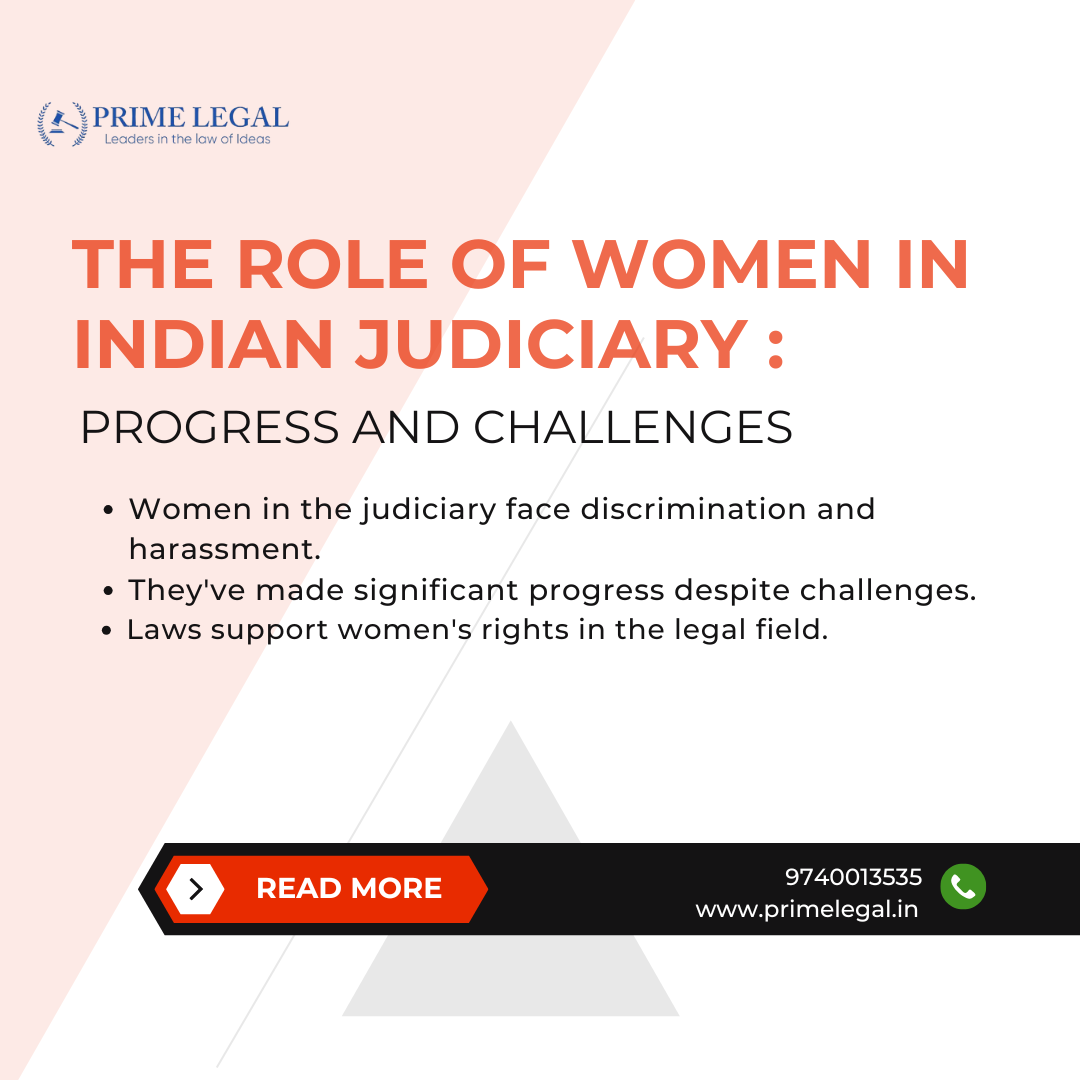ABSTRACT
With the advantages of all the traditional stereotypes men have been dominating the legal field so far but to achieve gender equality and to ensure a balance of judgements from both perspectives of men & women, women in law need a significant brace to break the stereotypes attached with our society and ensure that our women are given the same window of opportunity as that of men in contributing to Nation’s wellness.
Removing the labels put on by society and standing strong on the rocks thrown at them that come as the disguise of gender discrimination, work-life balance, sexual harassment & discrimination women have also been great warriors rising from the criticism.
KEYWORDS
Gender bias, judicial representation, work-life balance, career challenges, career progression.
INTRODUCTION
From the household to the workplace patriarchy has always had the high ground, with numerous challenges faced by women in general, the women in law have a lot on their plate in terms of discrimination & degradation.
As recorded in history, women have always overcome these hurdles with their determination & fortitude. Looking at the graph we can see significant progress in the field of law. From Justice M. Fathima Beevi, being the first ever Female Chief Justice of the Supreme Court to having 3 female judges in the bench of SC Indian women have evolved through thicks & thins and have made a remarkable change inspiring the future gentlewomen of India.
Problems faced by our ladies-in-law:
With no reservation for women in the judiciary, the Supreme Court presently has 34 Judges, with 33 serving with 4 women Judges, recording the highest number of women in its history. Across the 25 High Courts in India, only 13% are women with no Chief Justice.
There are numerous problems faced by women in their pursuit of building their empires in the field of law. Leila Seth, the first woman Chief Justice of a High Court, says she was a victim of gender bias during her initial days of service. She was also not comfortable being addressed as ‘My Lord’. Leila Seth also claims that she was spoken to in an offensive tone by a top judge while she was the acting Chief Justice of the Delhi High Court.(1) With all the talent & mannerisms if the Leila Seth had to face all of this, the picture of the safety of other women serving in law should be studied in detail.
It’s not that the problems start arising once they have made their way to the bench or the courtroom; the problems are rooted from the very beginning stemming from societal norms, gender discrimination, and assault during internship or at the workplace. From the second a woman decides to pursue law as a career she is met with discouragement, she will be asked questions regarding her getting succeeded in a field where there is prominent male dominance. This continues with gender biases, work-life balance, unequal pay, and limited opportunities in the workplace. Though overcoming these hurdles women are still left with fewer leadership opportunities and judicial appointments.
Progress made by Superwomen:
With all the complications our Indian women have still made significant progress in the field of Judiciary. Many female judges are paving the way for the next generation, inspiring the whole nation by making landmark judgements, and pushing for reforms. Through their utmost dedication, they are finally gaining recognition and respect; they are now looked up as leaders, challenging the old stereotypes. With the notable advancements more & more women are taking up law as their career, now there is almost equal ratio of men & women in law schools. Women are not only doing excellent in the Judiciary but are also evolving in other fields of law
LEGAL PROVISIONS:
- THE SEXUAL HARASSMENT OF WOMEN AT WORK PLACE (PREVENTION, PROHIBITION & REDRESSAL) ACT, 2013: This Act addresses sexual harassment at the workplace ensuring a safe working environment for women.
- Equal Remuneration Act, 1976: This Act ensures equal remuneration to both men & women.
- THE MATERNITY BENEFIT ACT, 1961: This Act ensures to provision of maternity benefits like maternity leave entitlements, the right to work in a safe environment & provision of medical benefits.
LANDMARK JUDGEMENT
While there are numerous landmark judgments related to women’s rights, there are also several cases where women lawyers have encountered violence & assault.
- KOLKATA: Nine female lawyers, including Bengal’s advocate on record in the Supreme Court, have been subjected to “threats, harassment and hatred” for arguing for the state in the SC on the RG Kar rape-and-murder case. (2)
- Women Lawyers claimed that they were ‘warned’ not to get involved in a case against a fellow lawyer. (3)
CONCLUSION
The role of women in the Indian Judiciary has evolved significantly but there is still room for change, which is possible only if society understands the hard steps a woman has to pass through for her to stand up in her career, especially like that of the profession in Law. From Justice M. Fathima Beevi being the first Chief Justice of India, the progress graph has been hauled up which is nothing but the result of these Women in Law striving to speak for the ones who cannot and to create their benchmark in the field of law.
“PRIME LEGAL is a full-service law firm that has won a National Award and has more than 20 years of experience in an array of sectors and practice areas. Prime legal falls into the category of best law firm, best lawyer, best family lawyer, best divorce lawyer, best divorce law firm, best criminal lawyer, best criminal law firm, best consumer lawyer, best civil lawyer.”
WRITTEN BY: D.V. DEEKSHA.


